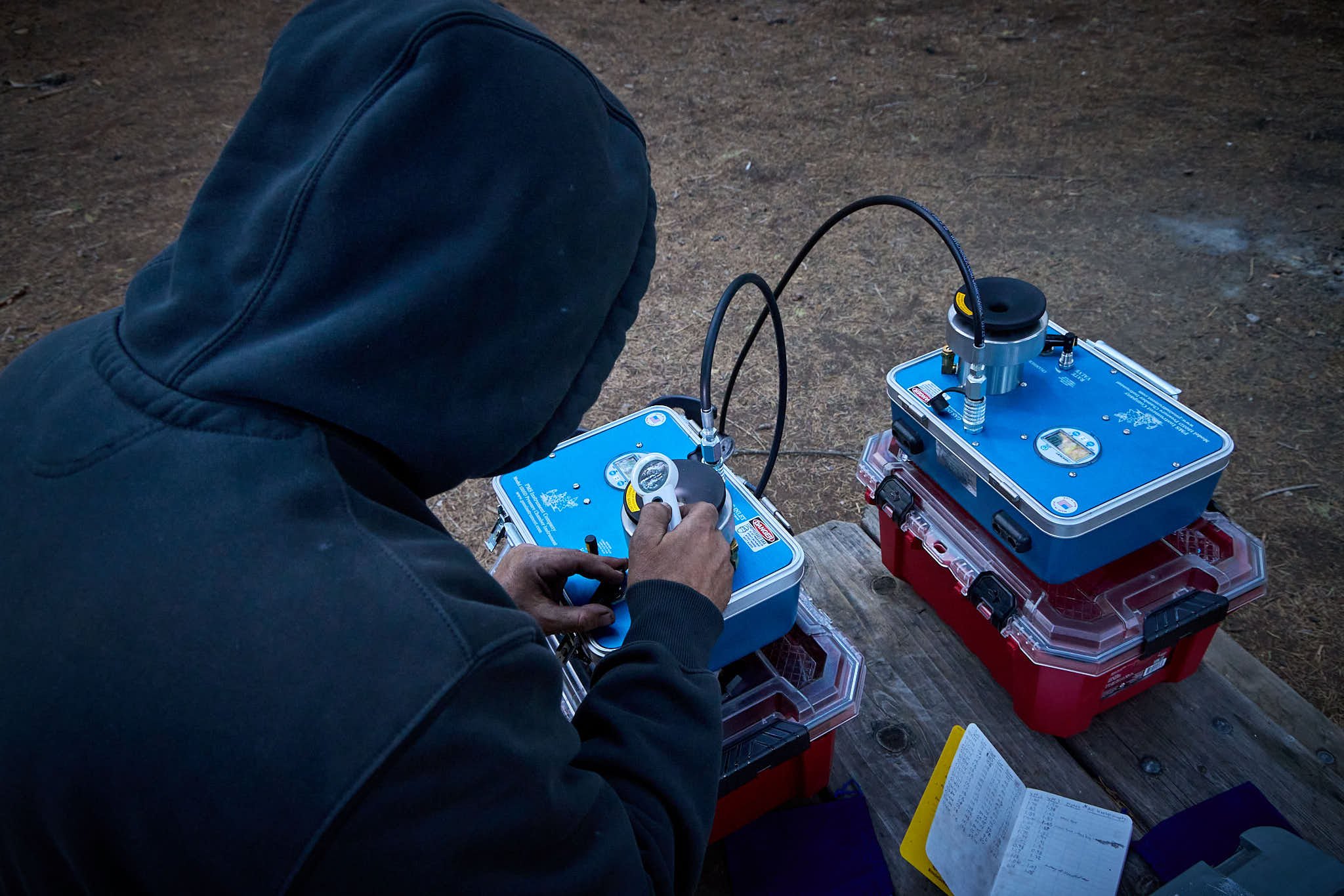
Tree Fire Damage Study
This study investigates the influence of fire on giant sequoia tree drought vulnerability and mortality risk
Giant sequoia trees killed by beetles in recent years appear to have been made more vulnerable to attack by recent fire damage and drought. Managers need to know how fire damage might exacerbate giant sequoia tree water stress and increase tree susceptibility to both drought-induced mortality and beetle attack. Basal fire scarring may be a critical component of giant sequoia vulnerability to drought and beetle attack.
Ancient Forest Society is using tomography to create detailed images of the trees’ internal trunk structure. It works by taking many measurements or "slices" from different angles and then combining them to make a full picture of the inside. We are using both electrical and sound waves to measure the tree's internal structure. Electrical Resistance Tomography (ERT) sends small electrical signals through the tree to find out where there is water or damage in the wood. Sonic Tomography (SoT) sends sound waves through the tree to detect areas that might be solid or hollow. When these signals are combined from different angles, they create a 3D image of what’s happening inside, showing us if the tree has areas that are dry, damaged, or healthy.
We are using tomography to explore how fire damage increases the risk of drought and pest attacks in giant sequoias. Fire scars at the tree base may worsen water stress, making trees more vulnerable to drought-related death and beetle infestations. We’re developing a standardized method to measure fire scarring using ERT and SoT, with the goal of creating an index to help managers assess scarring severity and its impact on tree health. This tool will aid land managers in planning for controlled burns, fire prevention, and post-fire restoration in sequoia groves. Our findings will also support further research on sequoia health, water use, and resilience in a changing climate.

Study Question
How does fire damage affect tree water status?
Methods
Electrical Resistance Tomography
We are using Electrical Resistance Tomography (ERT) to quantify spatial variation in tree stem water content and cell structure to differentiate heartwood, functional sapwood, and impaired sapwood.
Sonic Tomography
We are using Sonic Tomography (SoT) to provide additional information on wood physical properties necessary for evaluating tree fire damage.
Tree Water Status
We are measuring the water status to determine how stressed our study trees are. We are investigating the relationship between water status and basal fire damage.
Tree Structure
We are collecting tree structural measurements like height, diameter, and wood density and content to characterize each study tree. We are also quantifying basal fire scaring by creating high-resolution 3D models of the lower trunk of each study tree using LiDAR and photogrammetry techniques.
Collaboration
We are collaborating closely with a pioneer and developer of this technology, Lothar Göcke to adapt it for giant sequoias. The fire damage data collected may also be used in other collaborative studies with UC Santa Barbara.
Partners and Funders








